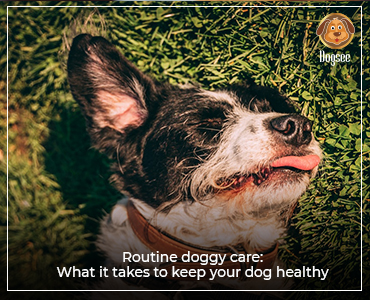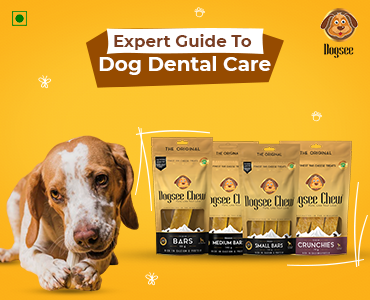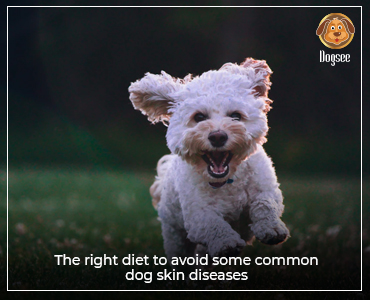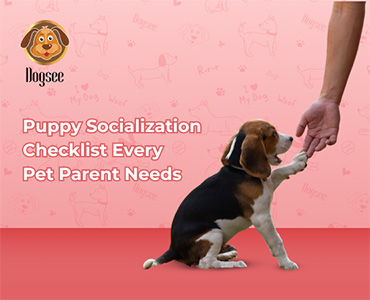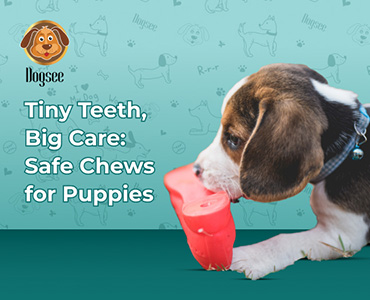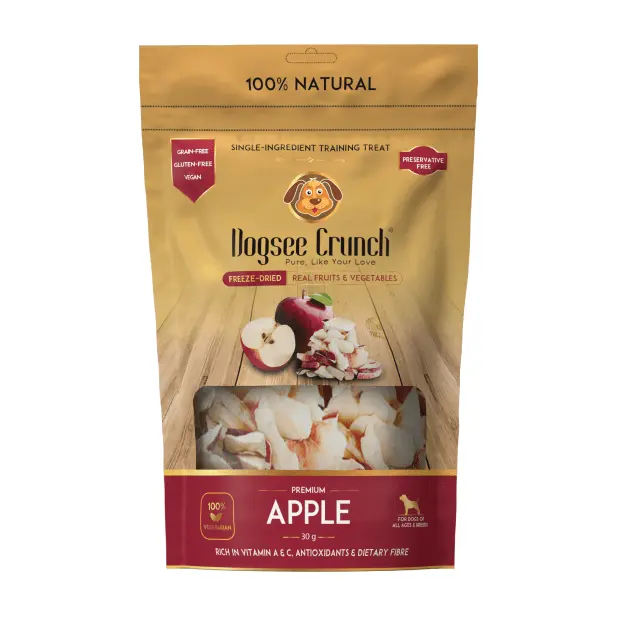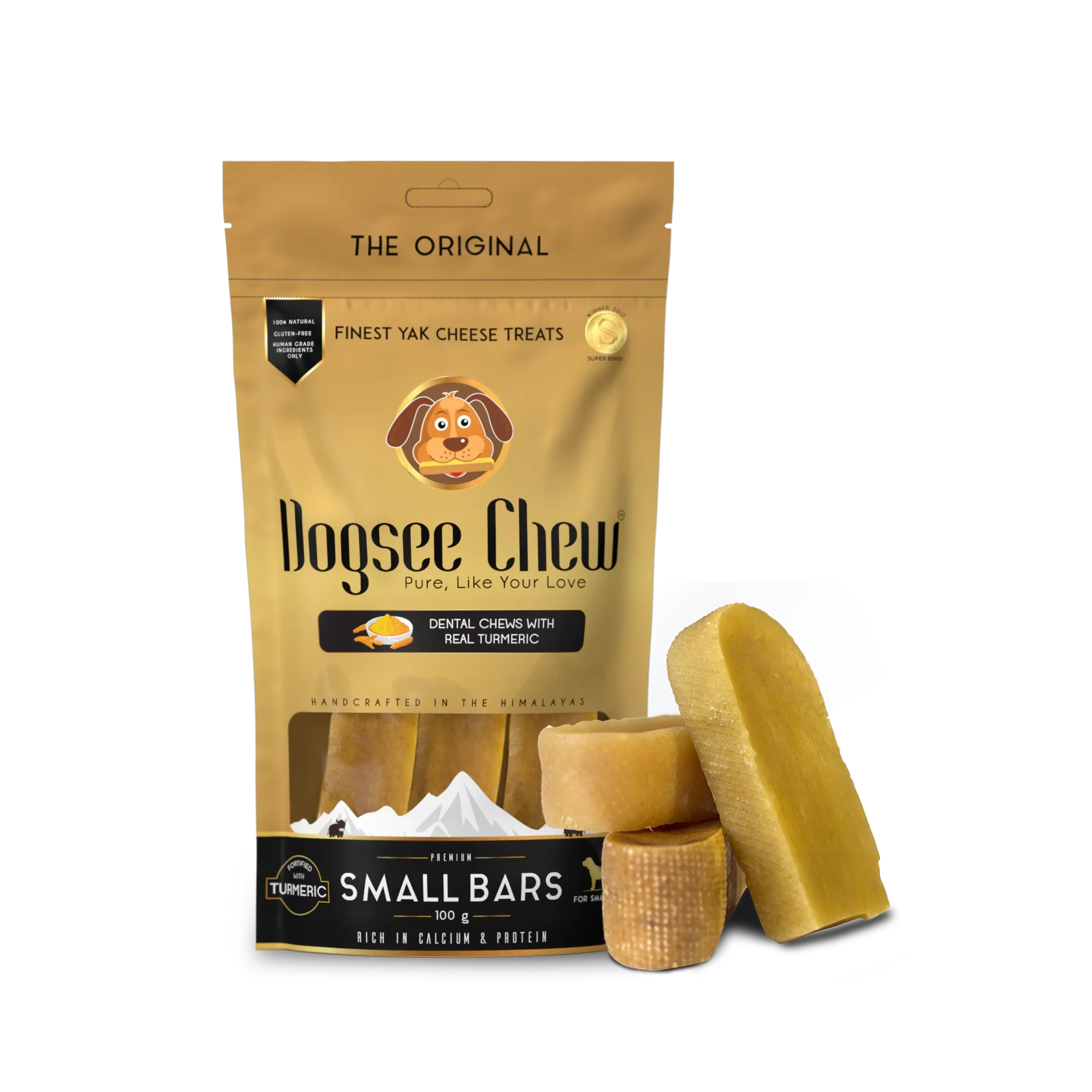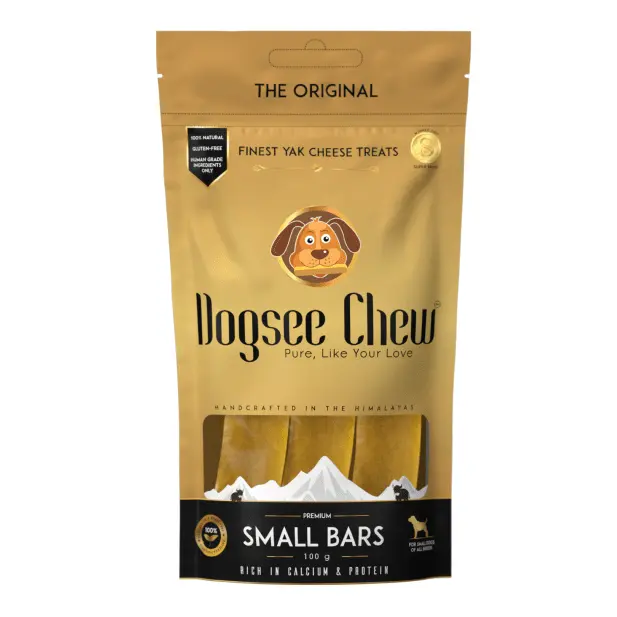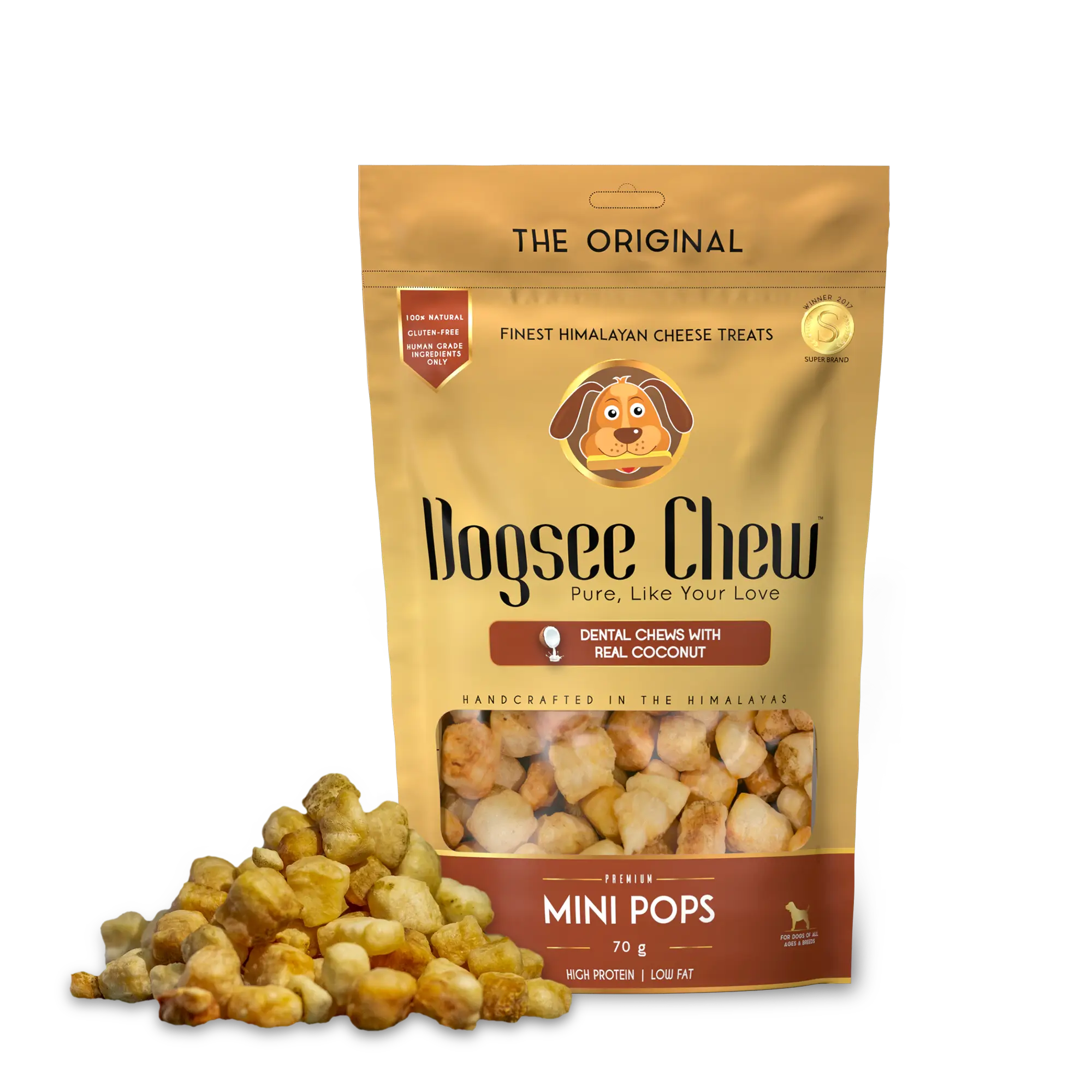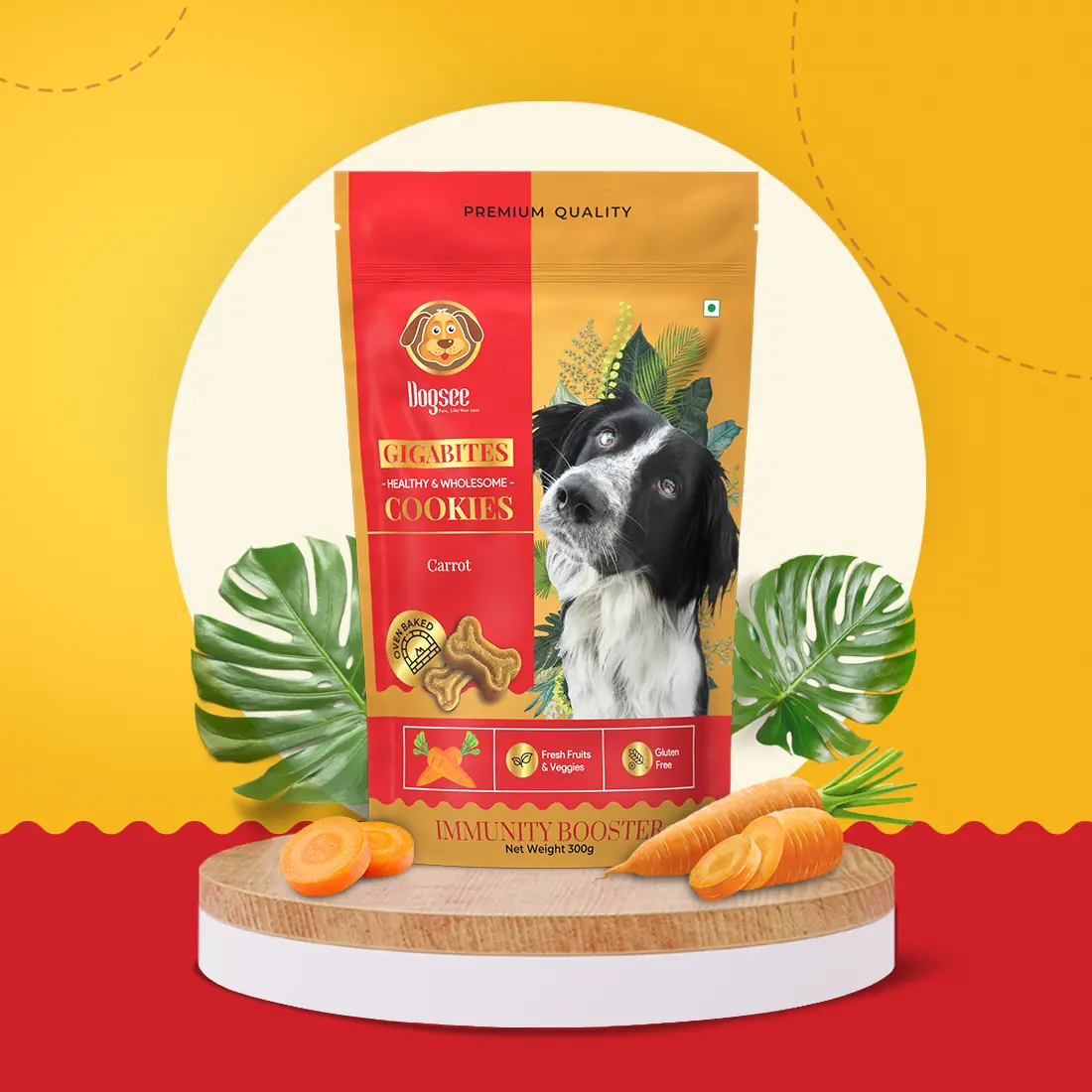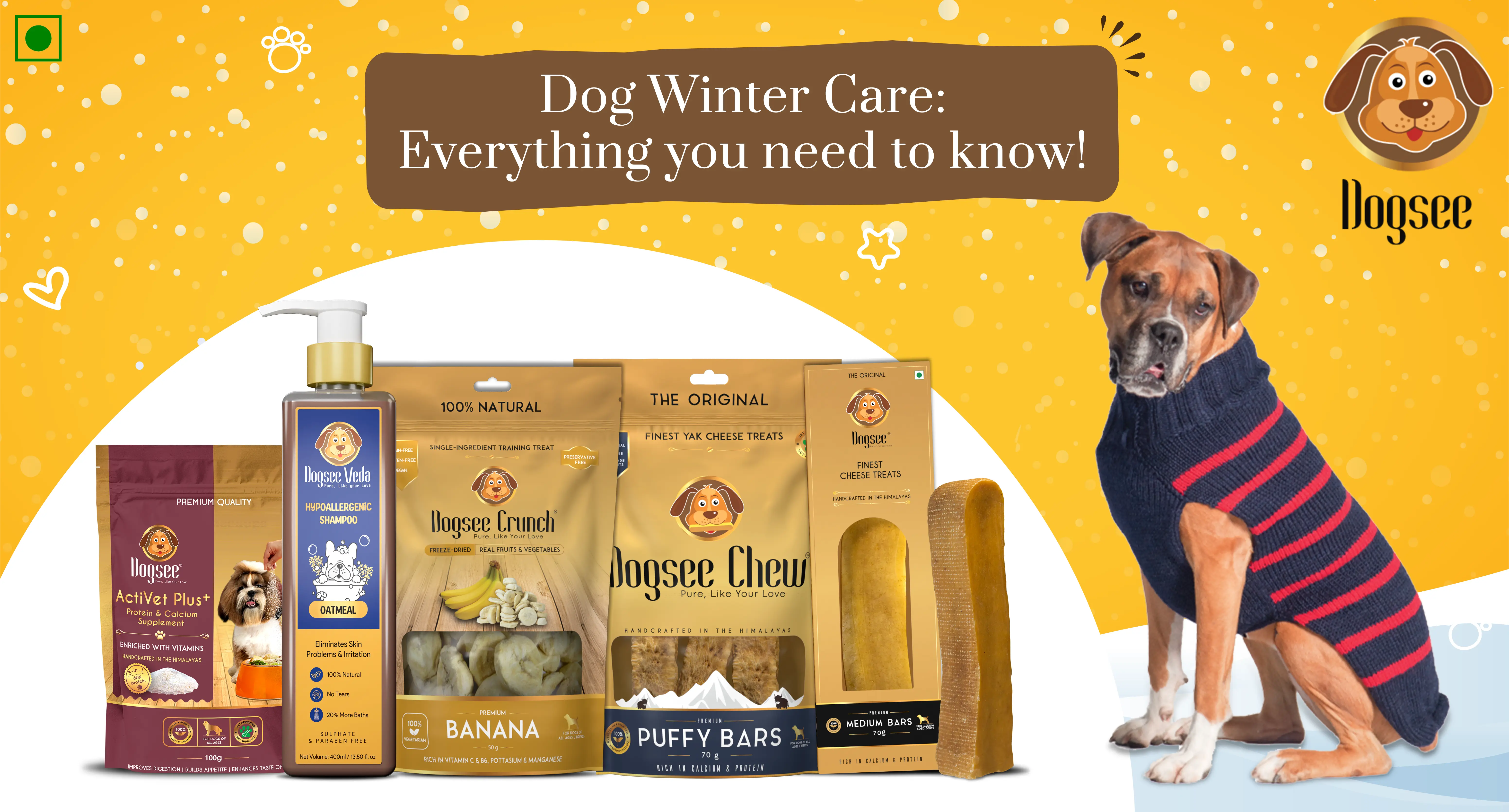
Winter is a great time to cuddle up with your furry friend, but it’s also a time when they need special care. From the cold weather to the holidays, there are a few things you should keep in mind to make sure your pet has a happy and healthy winter. In this blog post, we will look at some winter pet care tips, such as food, nutritious dog treats, exercise, and various ways to keep them warm and healthy. Continue reading to learn how to take care of your pet this winter.
How to recognise when it is too cold for them?
When it comes to cold weather, different dogs have different tolerance levels. Some breeds, like huskies and other dogs bred for colder climates, can withstand lower temperatures than smaller breeds or those with shorter fur. But a good rule of thumb is that if it's too cold for you, it's probably too cold for your dog.
In order to better understand how your dog is feeling in the cold, it is important to know their usual behavior and energy level. A normal body temperature for a healthy dog is between 100 and 102.5 degrees Fahrenheit (37 to 38 degrees Celsius), but there are many variables that affect a dog's ability to regulate their body temperature. Puppies, elderly dogs, and dogs with health problems like arthritis or heart disease are less tolerant of cold weather and are more vulnerable to the conditions caused by such extreme conditions.
Look out for these tell-tale signs to get alerted of your dog’s condition:
Shivering
Whimpering or Crying
Seeking Shelter
Exhaustion
Lethargy
Difficulty Breathing
Cold Body Temperature
Important tips and information to ensure you and your pet are geared up for this winter.
1. Protect your dog during winter from common issues and health conditions
Dogs are susceptible to a number of problems when exposed to freezing weather. Let’s look at the three most common issues that may arise during winter.
Frostbite: Frostbite is damage to the tissue caused by extreme cold. When the temperature drops below 32 degrees Fahrenheit, dogs are at risk. Frostbite is a normal response in dogs, similar to humans, in which blood is diverted from the extremities to vital organs when body temperature drops. Blood flow will be reduced in areas farthest from the heart, such as the tail, ears, nose, and paws, which can cause tissue damage.
Frostbite is rarely fatal in dogs on its own, but it is frequently followed by hypothermia, which can be fatal. Symptoms include pale or blue skin, cold to the touch, and stiffness. If you suspect your dog has frostbite, seek veterinary care immediately.
Hypothermia: Hypothermia occurs when a dog's body temperature drops below normal due to prolonged exposure to cold weather outdoors. When the body temperature falls, their breathing and heart rates slows down, which inturn can lead to severe health deterioration.
Signs of hypothermia include shivering, lethargy, weakness, and difficulty breathing. If you think your dog has hypothermia, wrap them in a warm blanket and seek veterinary care immediately.
Chapped Paws: Chapped paws are another common problem in dogs exposed to cold weather. The paw pads can crack and bleed, and the nails can become brittle and break. Symptoms include red, inflamed paw pads and nails that are cracked or broken. To prevent chapped paws, use a Paw Balm or Wax on your dog's paw pads before going outside.
2. Take care of your pet’s nutrition during winter
Maintaining a constant core body temperature is a critical biological necessity for all animals and humans. Shivering is one way that accomplishes this need. Shivering causes fat deposits and fur density to insulate to keep your pets warm. Shivering, on the other hand, also burns a lot of calories which leads to increased calorie expenditure that in turn leads to a necessity of more calories. Active animals that need more outdoor activities or exercise are better protected from the intensity of the cold when they have enough calories to combat the cold.
Therefore, if you are planning to feed your pooch the same amount of food as throughout the year, you will have to think twice. Every dog is different and some may need a little more or less food, so it's important to monitor your dog's weight and adjust their food accordingly.

The general rule of thumb is that you should reduce your dog's food intake by 10-15% in winter for obese dogs who are not as active as their couterparts. So, if you normally feed your dog 2 cups of food per day, you would reduce this to 1 3/4 cups in winter. Also switch their treats from unhealthy treats that are high in saturated fat to more natural options like Fruit and Vegetable Treats that are packed with vitamins, antioxidants and minerals or Low Fat Treats that can aid in weight control.
The same rule applies if your dog is more active and is of normal weight. You can increase the food intake by 10-15% in winter months to provide them enough calories to sustain. You can choose Bite-Sized Dog Treats or Healthy and Long Lasting Chew Bars.
If you have an underweight pet dog, you can offer more frequent meals and more calories per day. Nutritious treats that have good fats and proteins are a great way to make up the nutrient levels of your pet pooch. Himalayan Cheese Treats are one of the best options when it comes to treats that are high in protein, calcium and low in fat. Another great way to balance essential nutrients in your underweight dog’s diet is by adding Multivitamin Powder to their meals, which act as the perfect supplement of calcium and multivitamins for your dog. You can easily sprinkle the powder on their meals to make it more alluring and appetizing.

You can refer to our: dog feeding guide to know more about what to feed your dog and how much to feed.
In addition to tweaking the amount of food you give your dog, you may also want to consider switching to a higher-quality food in winter. This is because good quality food contains more nutrients and good calories which will help keep your dog healthy and energized in the colder months.
As always, consult with your veterinarian to ensure you are meeting your pet's individual nutritional needs during the winter months.
3. Protect your dog by keeping them warm and well groomed
Keep your dog warm: Invest in a good quality dog coat or sweater when you are taking them outdoors in freezing conditions. You may also want to invest in booties or Paw boots to keep their feet warm and dry. And make sure they are always dried off thoroughly after being outside.
Be aware of Ice: Ice can be dangerous for dogs, so be sure to keep an eye on your pet when they’re outside and clean their paws dry after walks in the outdoors.
Keep up with grooming: It’s important to maintain your dog’s regular grooming schedule during the winter, as their coat will provide extra insulation against the cold weather. Comb their fur regularly and use Good Quality and Natural Shampoos that do not contain harsh chemicals that tend to dry the skin.
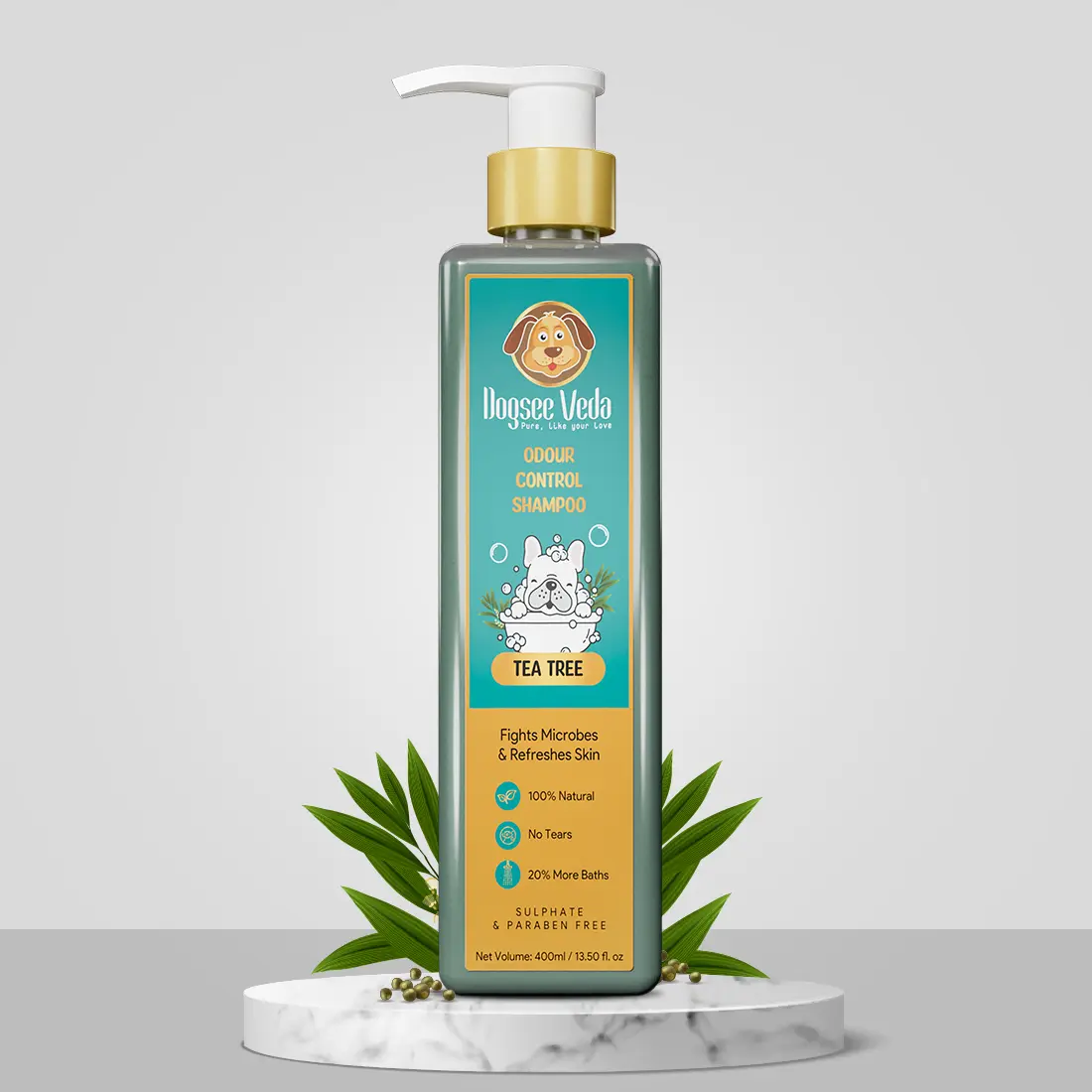
4. Provide a nice, warm and cozy environment
During the winter months, it's important to provide a cozy and warm place for your dog to sleep. There are a few things you can do to make sure your dog's bed is comfortable and warm during the winter. First, make sure the bed is in a draft-free location. If possible, put it near a heating vent or supplement with a space heater. You can also add an extra layer of warmth with a heated pet mat or electric blanket (provided you supervised closely). Another way to keep your dog's bed warm is to fill it with high-quality bedding materials like cotton or wool. These materials will insulate your dog's body heat better than synthetic fabrics. Finally, don't forget about your dog's water bowl. Cold water is no fun for anyone, so make sure to check it regularly and replenish as needed.
5. Avoid freezing temperatures
If the temperature dips below freezing, it's best to keep your dog indoors. Limit outdoor activity to brief walks and potty breaks, and make sure your dog has a warm place to come inside afterwards.You can keep them active by playing indoor games and other fun fetch activities to keep their body temperatures from dipping.
6. Keep an eye on their ears and paws
Dogs are susceptible to ear infections and other problems when their ears get wet and cold. Be sure to wipe down their ears and paws after being outdoors.
Frequently Asked Questions (FAQs):
1. How can I keep my dog warm in the winter?
Answer: There are a few things you can do to make sure your pup stays warm during winter weather. Some dogs will need a sweater or coat when they go outside, especially if they have short fur. You can also get heated dog beds or mats to place in your home. Be sure to provide plenty of bedding for your dog to burrow into, and consider using a space heater in their area if needed.
2. Should I change my dog's diet in the winter?
Answer: Some dogs may need a little more calories in the winter to help them stay warm, but consult with your veterinarian before making any changes to your pet's diet. Older dogs and those with health conditions may be more susceptible to weight gain, so pay close attention to their food intake and activity level and choose only nutritional treats and meals.
3. How can I prevent my dog from getting sick in the winter?
Answer: Just like people, dogs can get colds and other illnesses in the winter. To help prevent this, make sure they are up-to-date on all their vaccinations and take them inside if they are wet or cold after being outside. It's also important to keep an eye out for signs of illness, such as coughing, sneezing, or runny nose, and contact your vet right away if you notice any of these symptoms.
A little bit of effort on your part will go a long way in keeping your furry friend comfortable all winter long!
These were some insightful tips to keep your pet pooch in prime condition during winters. You can keep them happy by indulging in some fun indoor games to keep their mind and body active.
Do remember to choose the healthiest foods during winter and also all year round, to ensure they are fed foods that are natural, preservative free and chemicals free.
Dogsee makes the healthiest Himalayan cheese treats, hard bars, crunchy chews and yummy cookies made with high quality ingredients. These 100% vegetarian dog treats are also gluten and grain free, making it the ideal gluten free dog treats for dogs who are gluten and grain intolerant!
Be tuned to our Instagram Handle and get your hands on interesting furry stories, pet nutrition, latest offers and other super informative posts to keep your pet hale and hearty!
 HELPFUL0 people found it helpful
HELPFUL0 people found it helpful
Related Blogs
Subscribe to Our Blogs
and never miss on the latest update!








